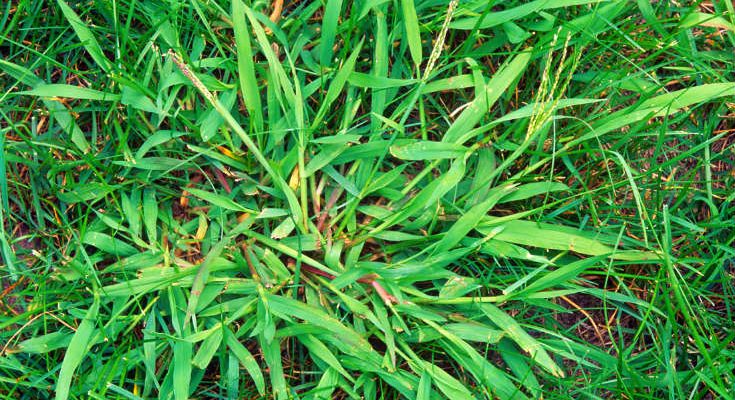Maintaining a healthy looking lawn can be a difficult chore. Our job can become a nightmare if our property becomes overrun by unwanted plants. One of the worst culprits is crabgrass. Crabgrass, also called finger-grass and fonio, is an annual plant that germinates in early spring. Once it becomes established it will compete with the domesticated grasses that we use as turf. No wonder we are on the hunt for the best crabgrass killer methods in this article!
How to Kill Crabgrass?
“Crabgrass can grow on bowling balls in airless rooms, and there is no known way to kill it that does not involve nuclear weapons.” – Dave Barry, American author
Finger-grass is a nuisance, and homeowners want the best crabgrass killer available to remove it quickly. The problem is the treatments required to remove it take time. Properties with thin lawns, poor drainage, and a lack of fertilizer and water provide ideal growing conditions.
Biological and chemical treatments are available that prevent this plant from growing. Other treatments are available that target crabgrass once it emerges. Manual removal of individual plants is time-consuming but can be effective as well.
Homeowners wanting to know how to kill crabgrass must understand that each plant can produce 150,000 seeds that will spread in a six-inch radius. When they die in the fall, they leave bald spots on lawns that provide the open space their seeds will need the following spring to thrive. Proper lawn maintenance is one way to combat crabgrass.
We have talked about weed prevention, like in the case of the notorious dallisgrass.
You will find the Best Crabgrass Killers Buyer’s Guide after the reviews.
Best Crabgrass Killer Reviews
Compare-N-Save Concentrate Grass and Weed Killer, 41-Percent Glyphosate
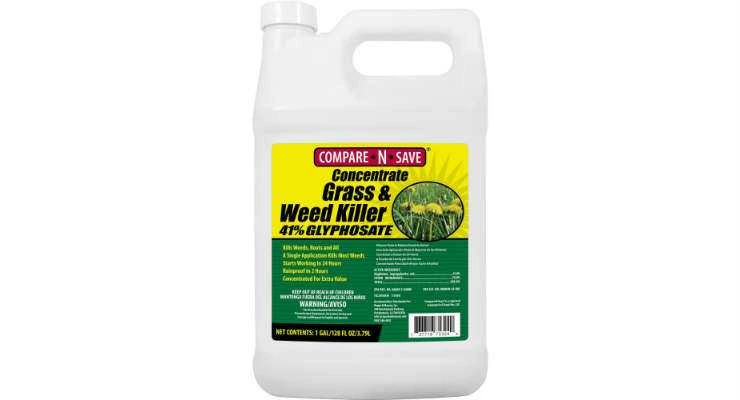
Pros
- It is rainproof within two-hours
- Plants are completely killed in less than five days
Cons
- This non-selective herbicide cannot be used near domestic grass
- Care must be taken when mixing to prevent over-dilution
Each jug of Compare-N-Save contains over nine pounds of product that can make up to 10-gallons of herbicide when it is mixed with water.
The chemical composition includes a respectable percentage of Glyphosate, making this non-selective ideal for those targeting unwanted plant growth on driveways and sidewalks on their property.
This Compare-N-Save product attacks the entire plant down to the root system.
Not just a fast way to kill crabgrass, but it also eliminates all other weeds (bi-annual and annual weeds alike), they will be gone for the rest of the year. We have also recommended the Compare-N-Save weed killer to control dandelions.
Bayer Advanced 704140 All-in-One Lawn Weed and Crabgrass Killer Concentrate
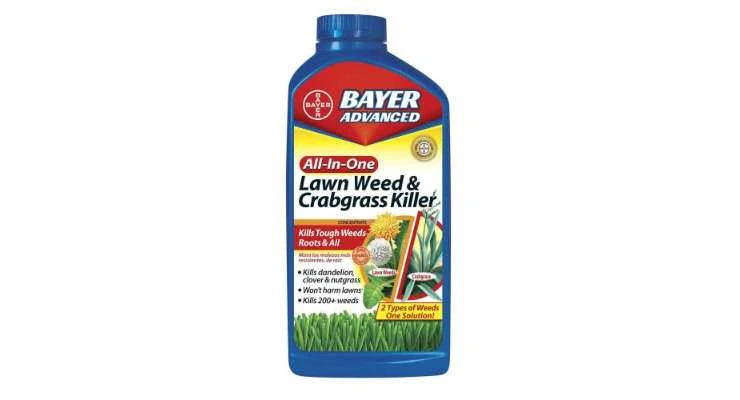
Pros
- Bayer Advanced is pet-safe when mixed properly
- Works on a wide variety of over 200 grasses and weeds
- Quick to work and allows yard access within 48-hours
Cons
- It will harm Bahia, Bermuda, Carpet, and St. Augustine grass
- This general purpose weed killer may require multiple applications
A 32-ounce container of All-in-One weed killer can make up to 10-gallons of herbicide when mixed in water.
This selective Bayer crabgrass killer attacks over 200 varieties of broad-leaf weeds and undesirable grasses, including crabgrass itself.
When diluted, this product is not overly harsh on most lawns.
Compare-N-Save Concentrate Grass and Weed Killer, 41-Percent Glyphosate
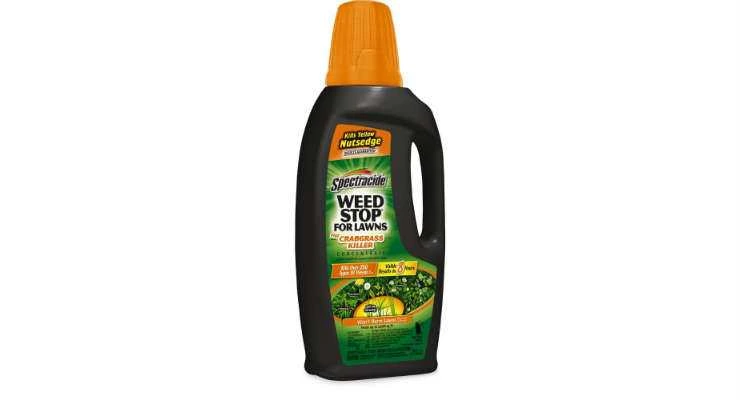
Pros
- It is rainproof within two-hours
- Plants are completely killed in less than five days
Cons
- This non-selective herbicide cannot be used near domestic grass
- Care must be taken when mixing to prevent over-dilution
The 32-ounce bottle of Spectracide Weed Stop does not require mixing but instead attaches to a garden hose for application. Due to the high concentration, a bottle will treat up to 5,000 square feet.
This is a nice feature for those wanting to avoid a mess.
The applicator sprays this selective herbicide directly onto the lawn with fast weed killer results. The Spectracide Weed Stop does not just control crabgrass but it also kills more than 250 types of weeds (the updated version kills an astonishing number of 470 grassy weeds as broadleaf weeds too).
This selective herbicide kills the roots in a matter of 8 hours or so with visible results on the day.
Roundup Weed and Grass Killer Super Concentrate
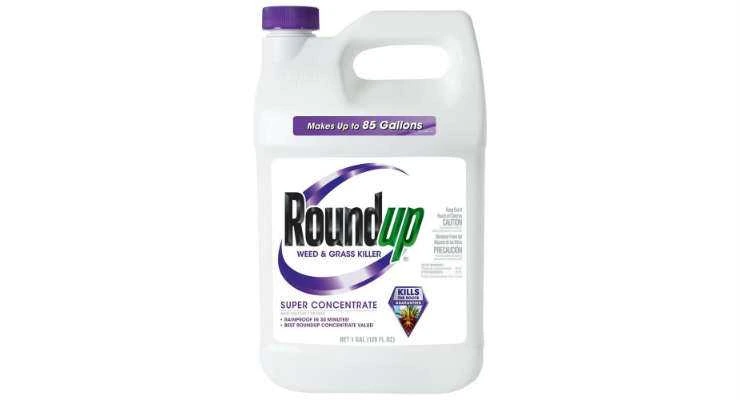
Pros
- This non-selective herbicide provides a powerful mix
- It attacks the entire plant above and below the soil
Cons
- The recommended mix ratio makes less herbicide than expected
- The 50.2-percent Glyphosate level requires extra caution when used
This gallon container of Super Concentrate can cover up to 25,500 square feet of property. For this large area, you might want to consider a backpack tank sprayer though.
A higher level of Glyphosate in this non-selective herbicide provides a powerful chemical plant remover that is good for use on a yard completely overrun with non-domestic grasses and broadleaf weeds.
This liquid crabgrass killer attacks the entire plant, not just the green plant tissue.
UPDATE: In 2018, pharmaceutical giant Bayer bought Monsanto, the highly controversial chemical and biotechnology corporation. Due to the sky-high number of lawsuits filed against Monsanto, Bayer’s shares fell as a stone dropped in a well. According to the documented cancer cases, false advertising, and falsification of test results, as well as due to the fact that Roundup 360 was banned in France, we do not recommend the purchase of Roundup products.
Garden Weasel AG All Natural Crabgrass Killer
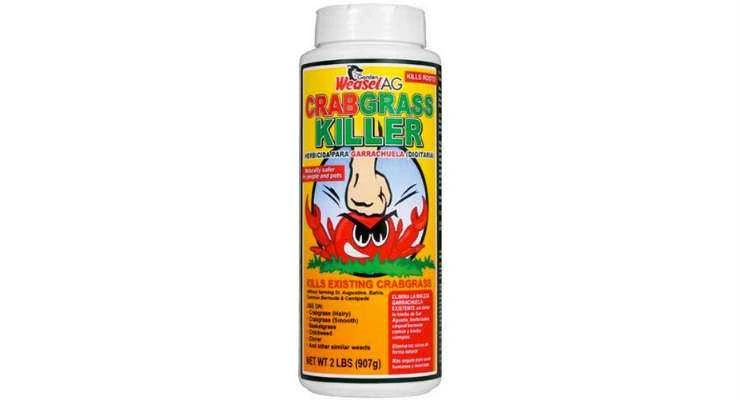
Pros
- This product uses all-natural ingredients
- It is children and pet friendly
Cons
- The shaker canister may struggle to provide even coverage
- Its formula is not as powerful as chemical herbicides are
This two-pound shaker of All Natural crabgrass killer is a good alternative for those who do not like to use chemical treatments on their lawns.
The ingredients do not pose a danger to children or pets that may make casual contact with it on the lawn.
Components in Garden Weasel Natural Crabgrass Killer do not require mixing and can be applied straight to a garden or lawn.
Scotts Turf Builder Halts Crabgrass Preventer with Lawn Food
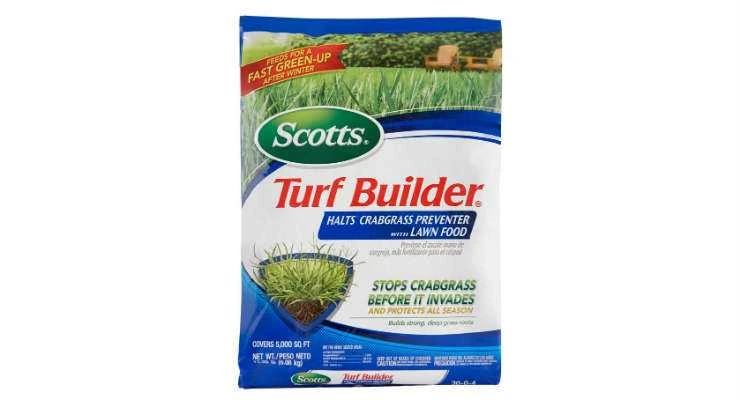
Pros
- Moisture and cold will not affect this preventative adversely
- It provides nourishment for domesticated grasses
Cons
- This product may damage bentgrass or lawns with dichondra
The 40.5-pound bag of Crabgrass Preventer with Lawn Food is a good choice for saving time.
Not only is this product pre-emergent, but it also provides nourishment for the lawn.
It has properties that make it resistant to both cold and moisture, allowing it to be placed on lawns early in the spring growing season.
Best Crabgrass Killers – The Buyer’s Guide
What Does Crabgrass Look Like – Identifying Crabgrass
The seeds germinate in the late spring and early summer and outcompete the domesticated lawn grasses, expanding outward in a circle up to 30 cm (12 in) in diameter. In the autumn when the plants die, they leave large voids in the lawn (source).
Crabgrass Images
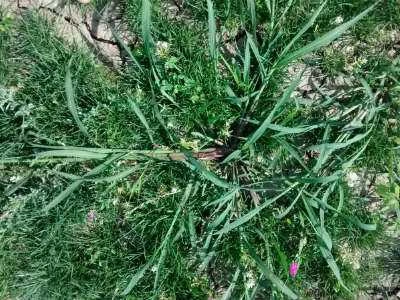
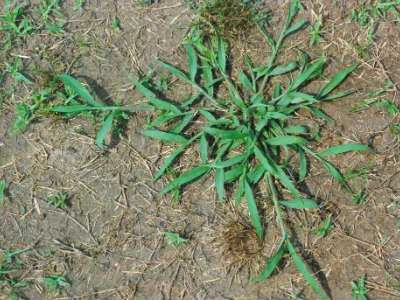
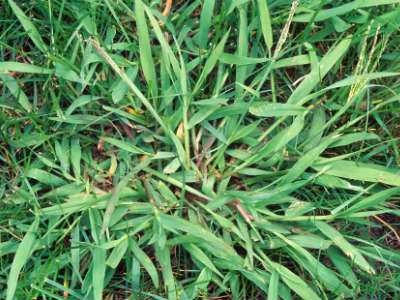
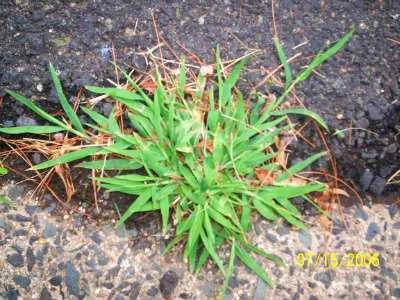
How Many Types of Crabgrass Are Out There?
There are over thirty species of crabgrass have been identified at this time. Fortunately, most homeowners in North America will encounter only two of these species in their gardens or lawns.
One of these Digitaria species is referred to as Large crabgrass (D. sanguinalis), and the other species is called Smooth crabgrass (D. ischaemum).
In some regions, Large crabgrass is called Hairy crabgrass.
Crabgrass Lifecycle – When Does Crabgrass Germinate?
The seeds from this annual plant are dispersed during the preceding fall from the previous generation of crabgrass.
They lay dormant during the cold winter months. Warmer ground conditions are required to begin the germination process.
This prerequisite makes late spring the time of year that crabgrass seeds begin to germinate.
Propagation will continue into late summer when these late-season seeds still have the warmer ground conditions that they require.
What is the Difference Between Crabgrass vs Bermuda Grass?
The major difference between the two is in appearance. Crabgrass is thought to be unappealing to most property owners, whereas Bermuda grass is used as turf on many lawns in southern regions of the United States.
Another distinction between them is how they spread. Crabgrass takes root where its nodes and seeds make contact with the ground. Bermudagrass grows through underground rhizomes or stolons that are located above the soil.
Finally, Bermuda grass can establish itself in thicker lawns that lack sunlight near the soil. Crabgrass will struggle in these conditions.
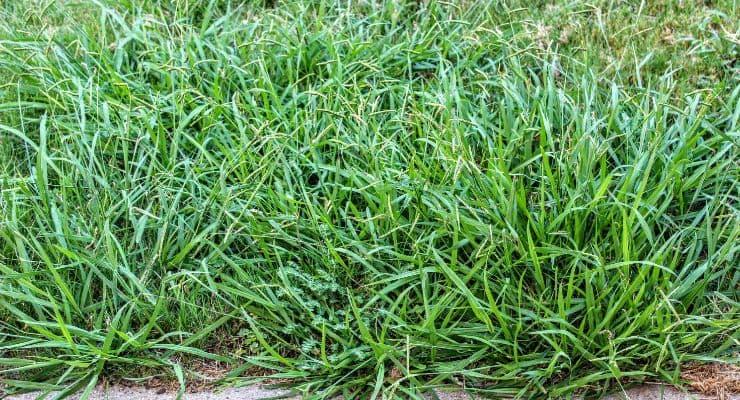
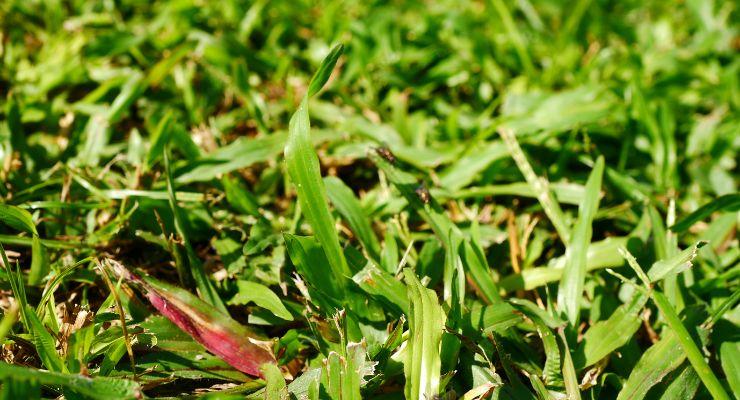
What is Crabgrass and Why is Crabgrass a Problem?
Crabgrass is an annual grass with opportunistic behavior. It means it is aggressive when spreading and once settled, it is growing fast. Crabgrass is not harmful and therefore it is not considered to be a weed. However, due to how it looks, it is often not welcomed in gardens, and crabgrass killers are needed.
Types of the Best Crabgrass Killer Methods
There is a large selection of finger-grass chemical treatments available to use on our lawns. These treatments can be divided into categories based on how they target or when they are used.
Best Crabgrass Preventer and Crabgrass Pre-emergent Treatments
A preventive or pre-emergent crabgrass treatment will target this type of grass as it germinates and before it sprouts, well before the weed seedlings emerge through the soil surface.
The best crabgrass preventer and the most ideal preventative measure is to keep a healthy, well-fertilized, and dense lawn that does not give space to invasive species. This way you may not even need any kind of herbicide to get rid of crabgrass as you are preventing its appearance in the first place.
It may also be worth mentioning that weed barriers can offer protection against new weed growth by blocking sunlight and forming a physical barrier against airborne weed seeds.
Pre emergent crabgrass killer is applied in May or June when the ground temperatures provide grass seeds a warm bed for germination to begin. They act as a blocker that prevents plant growth.
Preventives are one of the best crabgrass killers, as they do not allow finger grass to mature to the point of seed development.
This type of lawn treatment will last for a few weeks. In order to understand how to kill crabgrass, we must remember that preventatives will not kill off all of the seeds. Plants that survive and sprout require a post-emergent treatment. This treatment is applied directly to individual plants that have not developed seeds and will last longer than a pre-emergent treatment.
As a rule of thumb, it is best to wait at least two months before overseeding the area with your preferred, good quality grass seeds.
Best Pre and Post-Emergent Crabgrass Killer – Syngenta Tenacity Turf Herbicide

Tenacity herbicide is a remarkable solution for residential weed control that sets itself apart from the competition. With its unique ability to selectively eliminate nimblewill and bentgrass, it offers an effective way to manage these challenging weeds. But that’s not all—Tenacity goes above and beyond by targeting over 40 different lawn weeds of both broadleaves and grasses, including troublesome ones like Crabgrass, Clover, Goosegrass, Yellow Nutsedge, Windmillgrass, Ground Ivy, yellow foxtail, and oxalis.
What makes Tenacity even more impressive is its versatility. Thanks to its proprietary active ingredient, mesotrione, it can be used as both a pre-emergence and post-emergence herbicide. This means you can apply it before or after weed growth, adapting to your specific needs. It’s even safe for use on Buffalograss and dormant bermudagrass, providing a comprehensive solution for different turf types.
One of the standout features of Tenacity Turf Herbicide is its systemic action. By harnessing the power of a naturally occurring compound found in the bottlebrush plant (Callistemon citrinis), it inhibits photosynthesis in susceptible plant species. As a result, weeds lose their chlorophyll, causing their leaves to turn white before eventually succumbing to their demise. This unique mode of action ensures effective weed control while minimizing harm to desirable plants.
The Environmental Protection Agency (EPA) has recognized Tenacity’s superior environmental and human health profiles by granting it Reduced Risk status. This prestigious classification highlights its favorable ecotoxicity and safety compared to other registered herbicides. By choosing Tenacity Turf Herbicide, you contribute to reducing the overall herbicide load on the environment.
Selective Herbicides
A selective herbicide will target a group of plants, or in some cases, a specific type of weed. It consists of materials that are toxic to some plant species but less toxic to others.
A great example of this type of herbicide is special weed killers. The chemicals they contain attack broad-leafed weeds without damaging thin-leafed grass.
Unfortunately, finger-grass is a thin-leafed plant that avoids targeting by general purpose weed killers.
Crabgrass must be targeted by herbicides that can directly affect it without damaging other thin-bladed grasses. General purpose herbicides will kill finger grass if they contain Dithiopyr, DSMA, FEnoxaprop-p-ethyl, or Quinclorac.
Properties that lack other types of weeds do not require general purpose herbicides. A selective that targets crabgrass will work best in these cases.
Non-selective Herbicides
These herbicides do not attack groups of weeds or individual species; they are designed to kill off all plants. Non-selective herbicides are used on lawns that homeowners plan to kill off before re-seeding. The chemicals in these treatments work in two ways.
The first type of non-selective works by killing green plant tissues that it makes contact with. The chemicals that are used in these products include Diquat and Pelargonic acid.
The second type of non-selective works by traveling through the entire plant, including its root system. Chemicals that attack this way include Glufosinate-Ammonium and Glyphosate.
Organic and Environment-friendly Solutions
Property owners who do not wish to use harsh and potentially dangerous chemicals on their lawns can still combat crabgrass.
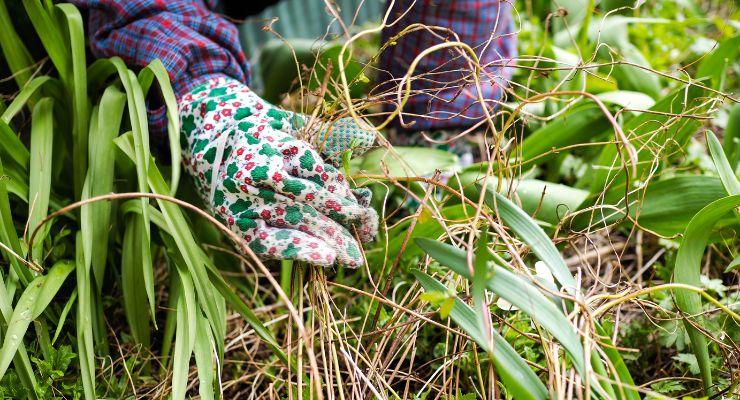
Pull It Out
Pulling individual plants manually is effective on wet lawns early in the growing season before the finger grass develops seeds and an extensive root system.
How to remove crabgrass by hand?
Picking grass by hand is best done when the soil is wet enough that the roots are loose. The grass can then be grasped near the base and pulled.
Hand tools can also be used to help free crabgrass from the soil. It is best to remove grass manually early in the year before seeds are able to form on the plant.
Weed Barriers and Landscape Plastics
Landscaping plastics and mulch can be used to smoother crabgrass seeds as well.
Other Organic Crabgrass Killer Methods
Other non-chemical treatments are also available for a homeowner to use. The market is flooded with alternative products that do not use harsh chemicals.
As a newer eco-friendly alternative, corn gluten meal is considered the best crabgrass killer by many gardeners who are sensitive about using chemical treatments. It not only kills crabgrass, it supplements gardens and lawns, but to be fair, not as effective as it can be read online.
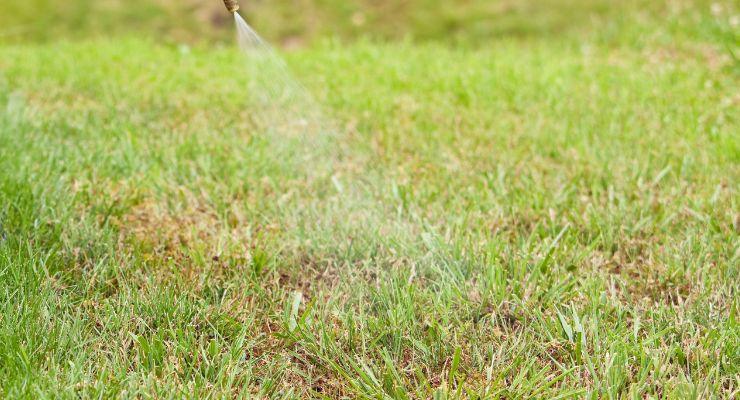
Crabgrass Control FAQs
What is pre-emergent crabgrass control?
This type of treatment attacks crabgrass before it is able to sprout. The control agents used will act as a blocker, preventing a germinating seed from absorbing the things that it needs in order to grow.
They can be used in a less-targeted manner and work in lower temperature ranges than a post-emergent does. These types of treatments last less than two months before they become ineffective.
Pre-emergent herbicides tend to be the most effective and economical products to fight crabgrass.
Is there any organic post-emergent that kills crabgrass?
There are a variety of products available that make use of natural substances in place of chemicals. Cumin, sodium hydrogen bicarbonate, and wheat flour are just a few natural ingredients that can be found in organic formulas.
Less common ingredients such as cinnamon bark are also used to combat finger-grass.
Corn gluten meal is a stand-alone alternative that is becoming a more popular alternative.
What is the best crabgrass preventer or pre-emergent?
The best products are able to withstand ground temperatures as low as 60 degrees Fahrenheit, which is the temperature experienced in May.
It will provide the necessary blockers required to stunt finger-grass growth before it is able to sprout.
If the product can also provide nourishment to domesticated grasses at the same time, this will promote a lawn that can sun-starve emerging crabgrass plants.
When to apply crabgrass preventer – before or after rain?
It is best to apply treatment after it rains instead of before a shower. Most chemical treatments will require hours or days to properly absorb into the crabgrass.
If it rains before this occurs, the treatment can be washed away.
Applying preventatives after a rain shower prevents this, and can also take advantage of the moist soil which will help with absorption.
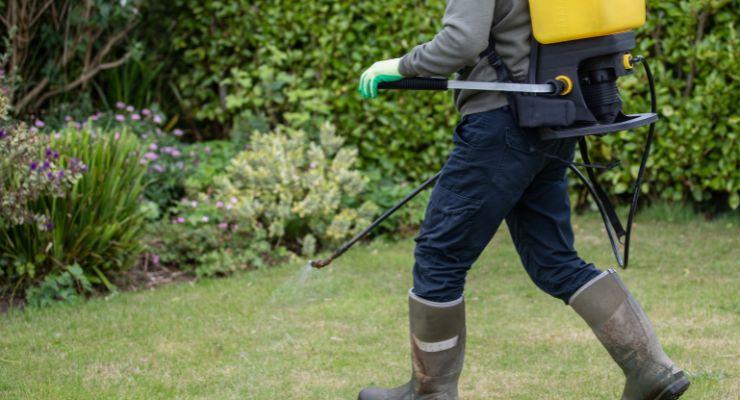
What is the best post-emergent crabgrass killer?
These products must be able to withstand the higher temperatures experienced during hot summer days.
A good post-emergent needs to be able to target crabgrass and kill it after it sprouts but before it develops seeds. The best post emergent crabgrass killer products will last on a lawn for most of the summer before becoming ineffective.
Manually removing plants early in the year is also an effective form of control.
What is the best time to kill crabgrass?
The best time to kill crabgrass is during the spring and early summer before it has a chance to develop seeds and spread them. Once the ground temperatures reach between 55 to 60 degrees Fahrenheit, crabgrass seeds will start to germinate.
Pulling crabgrass as soon as it is seen, along with pre-emergent treatments, helps to prevent finger grass from taking hold.
What is the best way to get rid of crabgrass or kill crabgrass in your lawn?
Proper lawn maintenance is considered the most effective way to prevent crabgrass, as well as a great way to combat it as well. Allowing the yard to grow to about four inches in length will help to block light near the soil that crabgrass desperately needs to grow.
Nourishment from grass clippings and fertilization helps to promote the growth of desired grasses. Watering for longer periods and less frequency will promote root growth with established lawns and make it difficult for crabgrass to thrive.
How to get rid of crabgrass in the spring?
During the spring months, crabgrass has yet to emerge from germination. Pre-emergent treatments focus on killing this type of grass at this stage. By May or early June, the ground temperatures should be above 60 degrees Fahrenheit in most regions. If the spring is unusually warm, treatments can begin earlier.
How to get rid of crabgrass in the summer?
By the time summer arrives, pre-emergent controls have worn away. The crabgrass that survived spring is post-emergent and will require different treatments. These products will usually work in temperatures ranging from 60 to 90 degrees Fahrenheit.
To get rid of crabgrass in the summer, apply on a day when no rain is forecast that can wash the lawn treatment away. They should be applied in the morning after any dew has evaporated.
How to get rid of crabgrass in the fall?
This is the time of year that frost begins to collect on lawns and the soil temperatures drop. These conditions will begin to kill off the current generation of crabgrass, leaving bald spots of soil or thinned-out spots in the turf.
Getting rid of crabgrass in the fall will require seeding these spots at this time of year. Doing this in the fall will promote the growth of desirable grasses that will compete with germinating crabgrass the following spring.

Conclusion – What is the Best Crabgrass Killer?
As our article demonstrates, there are quite a few options available for a homeowner who is battling finger-grass infestations. Understanding the lifecycle of this plant allows us to determine how to kill crabgrass throughout the year. One of the most important points our readers should take away from this discussion is that proper lawn care can be the best that kills crabgrass.
Remember that manual removal of individual plants may be time-consuming but highly effective, especially with young grass in moist soil.
Preventive treatments can be combined with targeted applications to remove infestations and prevent this unwanted guest from returning!
